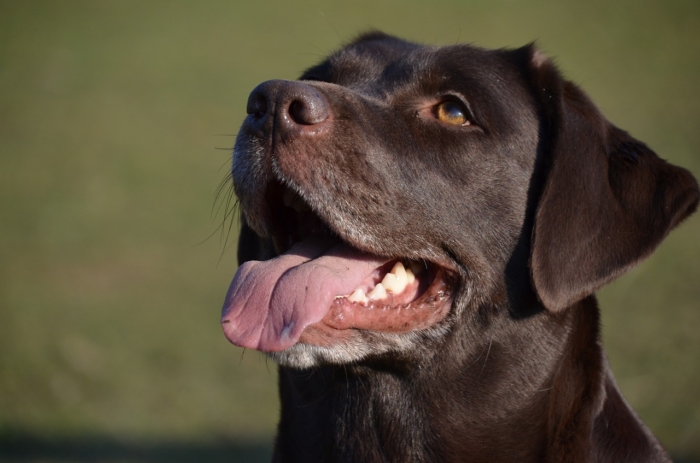Happy National Pet Dental Health Month
How to Brush Your Dog’s Teeth
 February is National Pet Dental Health Month, but your dog’s oral health should be a priority every day of the year. Up to 85% of dogs have periodontal (gum) disease. Not only can this be painful for your dog, it can also introduce bacteria into their bloodstream that causes liver, kidney, and heart disease.
February is National Pet Dental Health Month, but your dog’s oral health should be a priority every day of the year. Up to 85% of dogs have periodontal (gum) disease. Not only can this be painful for your dog, it can also introduce bacteria into their bloodstream that causes liver, kidney, and heart disease.
One of the best ways to protect your dog’s teeth is through regular brushing. To create an enjoyable dental hygiene routine with your dog, begin when your dog is at their most relaxed. Don’t forget to talk to your dog while you’re working with them to provide plenty of reassurance.
These simple steps help introduce dogs of any age to brushing.
- Before your first session, purchase toothpaste, and a toothbrush or finger brush made for dogs. These are specially designed products for a dog’s teeth, mouths, and digestion. Toothpastes for dogs come in irresistible flavors like peanut butter and poultry; human toothpaste shouldn’t be used.
- Kneel or sit beside your dog in a position that’s comfortable for both of you. Remember, standing over your dog can be threatening, and trying to force them will turn toothbrushing into a negative experience.
- Before introducing the toothbrush or toothpaste, gently rub your fingers over your dog’s gums to see how they respond. If your dog is uncomfortable with having your fingers in their mouth, continue practicing this step until they grow accustomed to it.
- After your dog is comfortable having their gums rubbed, introduce them to the toothpaste by putting some on your finger. They should enjoy the taste and consider it a treat. If your dog doesn’t like it, try a different flavor. Try putting some toothpaste on the toothbrush and letting them smell and lick it.
- When your dog seems at ease with the toothpaste and toothbrush, introduce them to their mouth. The toothbrush bristles should be at a 45-degree angle against the teeth to clear plaque and massage the gum line. If your dog is accepting to the brushing, try small, gentle circles. A little bleeding from the gums is normal but talk to your vet if it’s continuous or heavy.
When you’re first brushing your dog’s teeth, only do a few teeth at a time. Keeping it to a few minutes will prevent your dog from becoming overwhelmed by this new experience. When you’re finished, reward your dog with their favorite treat.
In addition to regular brushing at home, schedule annual cleanings and oral exams with your veterinarian. And, when you give your dog chew toys, look for products marked “VOHC-approved.” This designation means they meet the tooth cleaning guidelines established by the Veterinary Oral Health Council.
For your convenience, Wagging Tail’s Canine Spa also offers toothbrushing as a grooming service. Schedule your appointment today!

